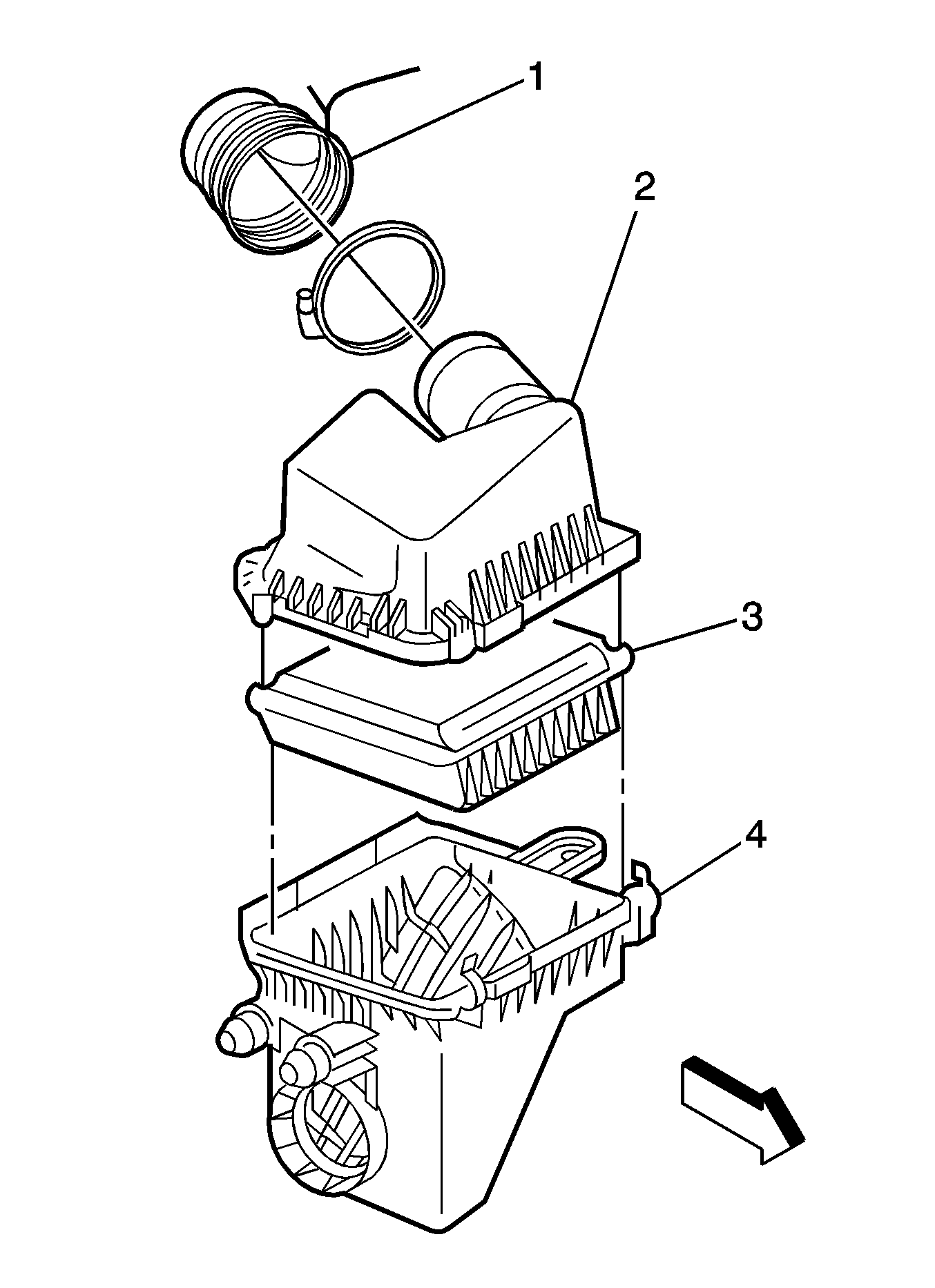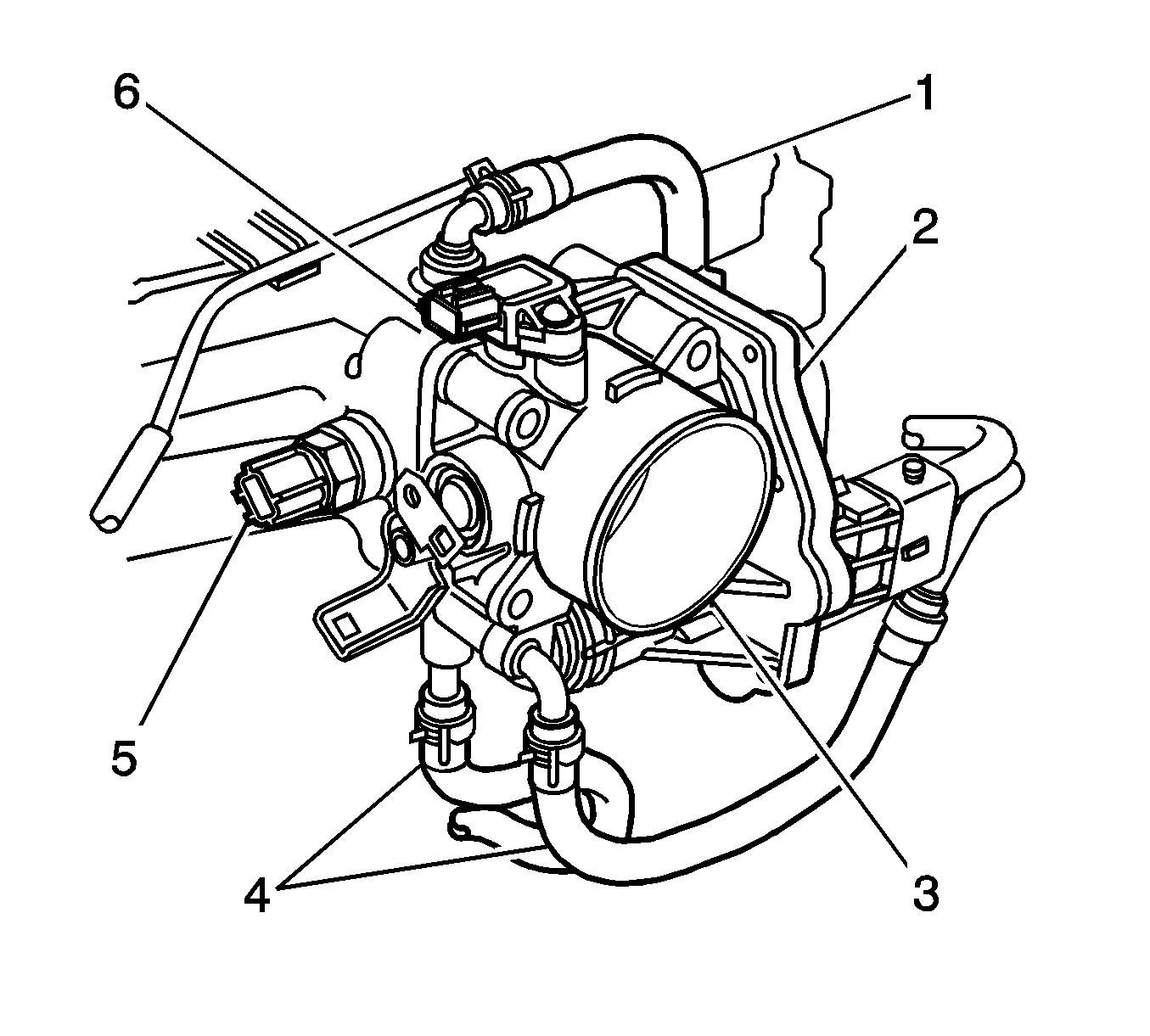The air induction system provides air with oxygen for the combustion process.
The air cleaner keeps dirt from entering the engine. Outside air is drawn into the
air cleaner lower assembly (4) and passes through the air cleaner element (3).
Next the air enters the air cleaner upper assembly (2) and flows through the
inlet air duct (1), to the throttle body, and into the intake manifold. Finally
the air travels into the cylinder head and through the intake port, ending in the
combustion chamber. The inlet air duct contains the intake air temperature (IAT) sensor 1.
The following components are directly or indirectly a part of the air supply
system.


